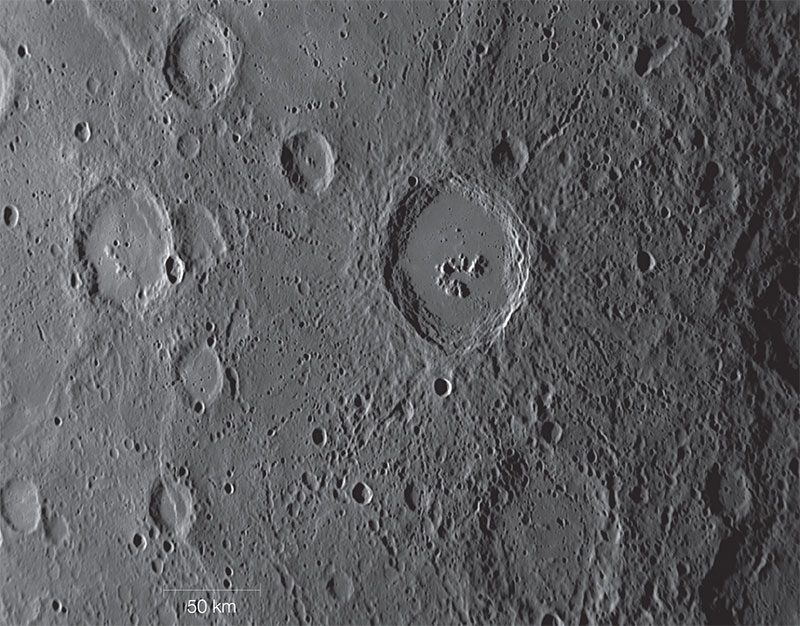

Mercury Data
- Average distance from the Sun: 0.39 x Earth distance
- Orbital period: 87.9 days
- Diameter: 0.38 x Earth diameter
- Mass: 0.055 x Earth mass
- Rotation period: 58.6 days
- Average density: 5.43 g/cm3
- Composition: rocky (including both rock and metal)
- Average surface temperature: 425°C (day), –175°C (night)
- Moons: 0
The innermost planet, Mercury, lies just a few steps from the model Sun. Mercury is the smallest planet, and in our model it is only about as big as the period at the end of this sentence. Mercury is a desolate, cratered world with no active volcanoes, no earthquakes, no wind, no rain, and no life. Because there is virtually no air to scatter sun-light or color the sky, you could see stars even in the daytime if you stood on Mercury with your back toward the Sun. You wouldn’t want to stay long, however, because the ground on Mercury’s day side is nearly as hot as hot coals (about 425°C). Nighttime would not be much more comfortable: With no atmosphere to retain heat during the long nights (which last about 3 months), temperatures plummet below -150°C (about -240°F)–far colder than Antartica in winter.
Angular size activity (for those on an actual tour of a Voyage model): Before you move on, hold up your thumb at arm’s length and compare it to the size of the model Sun as it appears from the model Mercury’s location. We’ll then do the same from other planets. What do you expect to see happening?
Note: This simple activity illustrates the concept of angular size, which describes how much of your field of view is occupied by an object as you look at it. As you will see, angular size depends on both the actual (physical) size of an object and its distance from you. Your thumb and the model Sun don’t change their sizes as you walk, but you can change your thumb’s angular size by moving it closer to or farther away from your eyes, and you will notice the Sun’s angular size getting smaller as you walk farther from it.
